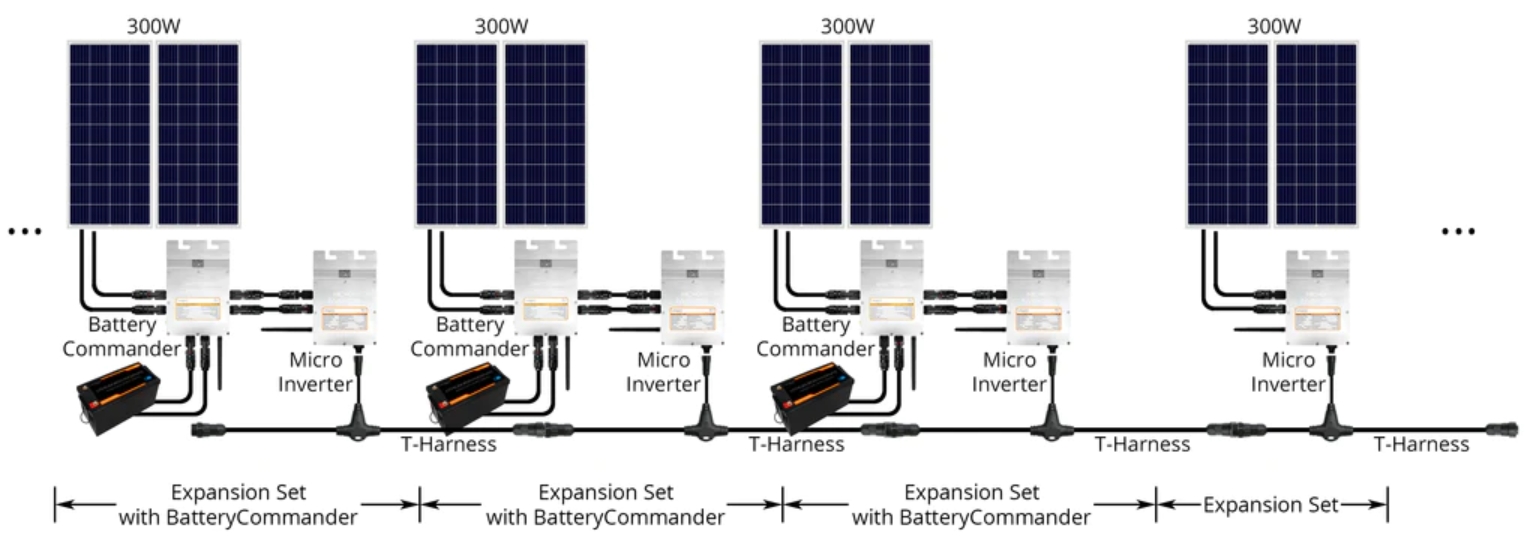
Micro inverter solar technology is an innovative approach to solar power generation, particularly suitable for residential applications. Here’s a comprehensive guide to help homeowners understand this technology:
What is a Micro Inverter Solar?
- Basic Concept: A micro inverter solar is a small device used in solar photovoltaic (PV) systems. Unlike traditional solar systems that use a single, central inverter, micro inverter solar is attached to each solar panel individually.
- Function: Each micro inverter solar converts the direct current (DC) electricity generated by its respective solar panel into alternating current (AC) electricity. This is the form of electricity used in homes and on the power grid.
Advantages of Micro Inverter Solar
- Enhanced Efficiency: Micro inverter solar optimize the output of each individual panel. If one panel is shaded or underperforming, the others are not affected, unlike in traditional systems where one underperforming panel can reduce the output of the entire string.
- Easier Installation and Scalability: They are easier to install and make it simpler to expand a solar system later. Homeowners can start with a few panels and add more as needed.
- Improved Safety: DC electricity is converted to AC right at the panel, reducing the risk of high-voltage DC power.
- Monitoring and Maintenance: They allow for more detailed monitoring of each panel’s performance, making it easier to identify and fix issues.
Disadvantages
- Cost: Micro inverter solar is typically more expensive upfront than traditional central inverters.
- Potential for More Points of Failure: Since there is micro inverter solar on each panel, there are more components that could potentially fail.
Suitability for Homeowners
- Roof Conditions: Ideal for roofs with shading issues or complex layouts, as each panel operates independently.
- Energy Needs and Goals: Great for homeowners who may want to start small and expand their solar array over time.
- Budget Considerations: While more expensive upfront, micro inverter solar can offer higher efficiency and potentially greater energy savings over time.
- Maintenance and Monitoring: Suitable for those who appreciate detailed monitoring of their system’s performance.
Installation and Maintenance
- Installation Process: Similar to traditional systems, but with additional steps to install the micro inverter solar. It’s usually done by professional solar installers.
- Maintenance: Generally low-maintenance. Online monitoring tools help identify issues quickly.
Future and Trends
Micro inverter solar technology is continually evolving, with improvements in efficiency and reliability. Innovations may lead to further cost reductions and enhanced functionality.
Making a Decision
Homeowners considering micro inverter solar technology should weigh the initial investment against the potential long-term benefits, considering their specific situation – like roof layout, shading, and energy goals. Consulting with a solar energy expert is advisable to make an informed decision.
In summary, micro inverter solar technology offers a modular, efficient, and safe approach to solar energy generation, suitable for many homeowners looking to harness solar power.
